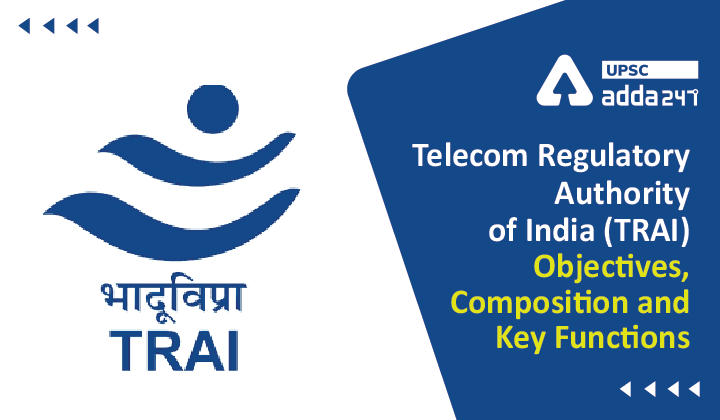Table of Contents
Telecom Regulatory Authority of India (TRAI)- Relevance for UPSC Exam
- GS Paper 2: Indian Constitution- Statutory, regulatory, and various quasi-judicial bodies.
भारतीय दूरसंचार नियामक प्राधिकरण (ट्राई) | ट्राई के बारे में, संरचना, निष्कासन एवं प्रमुख उद्देश्य
Telecom Regulatory Authority of India (TRAI) in News
- Recently, Union Minister for Communications, Electronics & Information Technology inaugurated a seminar to commemorate the 25 years-long journey of the Telecom Regulatory Authority of India (TRAI) Act.
Telecom Regulatory Authority of India (TRAI)
- About: TRAI was established with effect from February 20, 1997, by the Telecom Regulatory Authority of India (TRAI) Act 1997.
- Setting Telecom Regulatory Authority of India (TRAI) was necessary after opening up the telecommunication sector to private operators.
- TRAI Headquarters: Telecom Regulatory Authority of India (TRAI)’s headquarter is located in New Delhi.
- Legal Status: Telecom Regulatory Authority of India (TRAI) is a statutory authority set up under the Telecom Regulatory Authority of India (TRAI) Act 1997.
- Mandate: Telecom Regulatory Authority of India (TRAI)’s mandate is to regulate telecom services, including fixation/revision of tariffs for telecom services.
- These responsibilities were earlier vested in the Central Government.
Major Reforms in Telecom Sector
Key Objectives of TRAI
- Growth of the Telecommunication Sector: TRAI’s mission is to create and nurture conditions for the growth of telecommunications in the country.
- Regulating Telecom Services: TRAI regulates telecom services including fixation/revision of tariffs for telecom services that were earlier vested in the Central Government.
- Ensuring Fair and Transparent Policy Environment: TRAI also aims to provide a fair and transparent policy environment for the telecom sector.
- This promotes a level playing field and facilitates fair competition.
Composition of TRAI
- TRAI Members Appointments: TRAI members are appointed by the Government of India.
- TRAI Members: The TRAI consists of-
- A Chairperson,
- Two whole-time members and
- Two part-time members
- Tenure of TRAI Members: The Chairperson and other members shall hold their office for a term of three years or till the age of 65 years, whichever is earlier.
- Chairperson: The Chairperson has the powers of general superintendence. He/She presides over the meetings of the TRAI.
- Vice-Chairperson: The Central Government may appoint one of the members of the Authority as the Vice-Chairperson of TRAI.
- Responsibility: He/She exercises and discharges the powers and functions of the Chairperson in his/her absence.
Removal of TRAI Members
- Removing Authority: The Central Government is empowered to remove any member of the Telecom Regulatory Authority of India (TRAI).
- Grounds of Removal: TRAI Act mentions following grounds on which the central government can remove a TRAI Member. A person can be removed from TRAI office if he/she-
- has been adjudged an insolvent
- has been convicted of an offence that involves moral turpitude
- has become physically or mentally incapable of acting as a member
- has abused his/her position; rendering his/her continuance in office prejudicial to the public interest.





 TSPSC Group 1 Question Paper 2024, Downl...
TSPSC Group 1 Question Paper 2024, Downl...
 TSPSC Group 1 Answer key 2024 Out, Downl...
TSPSC Group 1 Answer key 2024 Out, Downl...
 UPSC Prelims 2024 Question Paper, Downlo...
UPSC Prelims 2024 Question Paper, Downlo...




